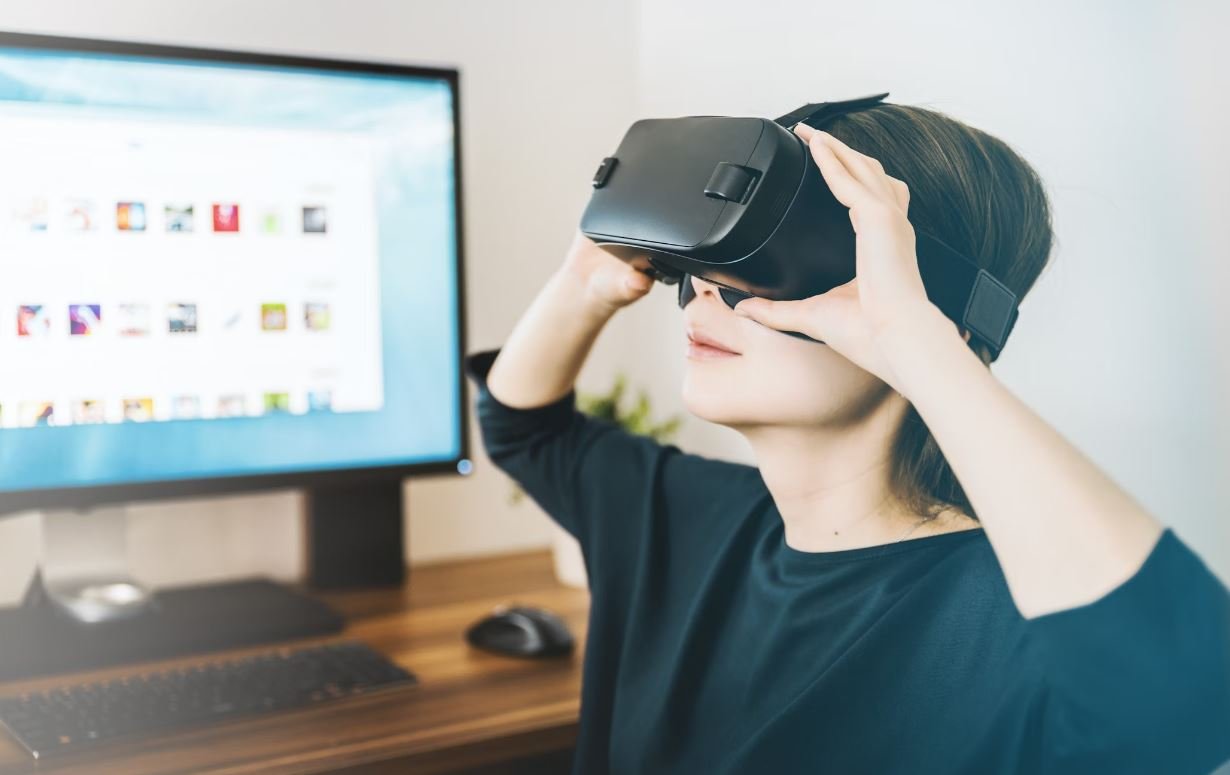AI Deepfake Definition
Welcome to our informative article on AI deepfakes. In recent years, the advancement of artificial intelligence (AI) technology has given rise to a concerning trend known as deepfakes. Deepfakes are synthetic media where a person in an existing image or video is replaced with someone else’s likeness through the use of AI algorithms.
Key Takeaways
- AI deepfakes use advanced algorithms to manipulate images or videos.
- Deepfakes can be created for malicious purposes such as spreading misinformation or for entertainment purposes like impersonating celebrities.
- Deepfake detection technologies are being developed to combat the harmful effects of manipulated media.
- Public awareness and education are crucial in the fight against the negative impact of AI deepfakes.
**Deepfakes** are created using **machine learning** techniques, particularly **deep neural networks**. These networks are trained on large amounts of data to learn and mimic the facial expressions, movements, and audio of the target person. As a result, the deepfake video or image appears almost indistinguishable from reality.
Understanding AI Deepfakes
While deepfakes have raised concerns about their potential to be used for harmful purposes, they also have creative and positive applications. *For instance, deepfake technology has been used to revive deceased actors in movies, providing fans with a chance to see their favorite stars on the big screen once again.*
Creating a deepfake typically involves two steps:
- The AI algorithm is trained on a large dataset consisting of images or videos of both the target person and the source person.
- The trained algorithm then transforms the appearance of the source person to match the target person.
Deepfake Detection
The rise of deepfakes has raised concerns about the potential for misinformation and manipulated media. As a result, researchers and organizations are actively developing deepfake detection technologies. These technologies employ various techniques, including **forensic image analysis**, **advanced machine learning algorithms**, and **face manipulation detection** networks to identify and flag deepfakes.
Impact and Future Implications
AI deepfakes have the potential to cause significant harm by spreading misinformation, damaging reputations, and inciting conflicts. However, with advancements in deepfake detection and increased public awareness, we can mitigate their negative effects.
| Method | Description |
|---|---|
| Forensic Image Analysis | Examines subtle inconsistencies in the manipulated media to identify signs of deepfakes. |
| Reverse Engineering | Attempts to analyze the process used to generate the deepfake to uncover anomalies. |
| Application | Description |
|---|---|
| Entertainment | Allows for the creation of fictional scenarios, such as digitally bringing back deceased actors. |
| News and Journalism | Raises concerns about the authenticity of media and the need for responsible reporting. |
| Strategy | Description |
|---|---|
| Policy and Legislation | Developing laws and regulations to deter the creation and distribution of harmful deepfakes. |
| Public Awareness | Increasing knowledge about deepfakes to help individuals identify and question the authenticity of media. |
In summary, AI deepfakes are synthetic media that utilize machine learning algorithms to replace a person’s likeness in an existing image or video. They present both opportunities and challenges, and their impact on society depends on how we respond to the emergence of this technology.

Common Misconceptions
1. AI Deepfake Definition
There are several common misconceptions surrounding the definition of AI deepfake technology. Deepfakes refer to AI-generated content that convincingly combines or manipulates existing audio, video, or imagery to create realistic-looking but fabricated content. However, people often misunderstand what deepfakes truly entail:
- Deepfakes are not limited to just video manipulation; they can also be used to generate realistic audio or imagery.
- Deepfakes are not just limited to celebrities or political figures; anyone’s likeness can be used.
- Deepfakes are not always harmful or used for malicious purposes; they can be used in entertainment, art, or even for educational purposes.
2. Misconception about Authenticity
One common misconception about AI deepfakes is that they are always easy to spot and identify. While it is true that some deepfakes may have visible artifacts or inconsistencies, sophisticated deepfake technology can produce highly convincing content that is difficult to distinguish from reality:
- Not all deepfakes have noticeable visual distortions or errors that can be instantly recognized.
- Advanced AI algorithms can mimic human behavior and expressions with great accuracy, making it harder to distinguish between real and fake content.
- Deepfake detection techniques are constantly evolving, but so are the techniques used to create more convincing deepfakes.
3. Perception of Manipulation
Another misconception about deepfakes is that people assume they are solely used for nefarious purposes, such as political propaganda or defamation. While deepfakes can indeed be misused, it is crucial to understand the broader context and potential applications of this technology:
- Deepfakes can be used as a tool for entertainment, such as creating realistic digital avatars for films or video games.
- Artists and designers can employ deepfake technology to create unique and imaginative visual effects or transformative artworks.
- Deepfakes can also be utilized in educational settings to simulate historical events or recreate scientific experiments in a visually engaging manner.
4. Implications for Consent
One misconception concerning AI deepfakes revolves around consent. Some individuals assume that consent is not required when using someone’s likeness in a deepfake. However, proper consent is still essential, especially when it comes to privacy and ethical considerations:
- Using someone’s likeness without their consent in a deepfake can infringe upon their right to privacy and personal identity.
- Deepfake technology has the potential to amplify the dissemination of non-consensual explicit material, leading to serious harm to individuals.
- To ensure ethical use of deepfakes, consent should be obtained from individuals whose likeness is being used, particularly in cases where the content may cause harm or misrepresentation.
5. Trust and Manipulation
There is a common misconception that deepfakes will completely erode trust in digital media and make it impossible to distinguish truth from falsehood. While deepfakes do pose challenges, they do not render all digital media untrustworthy:
- While deepfakes can create realistic and fabricated content, there are also technologies being developed to detect and verify the authenticity of digital media.
- Critical thinking, media literacy, and fact-checking will continue to play vital roles in assessing the veracity of information in the digital age.
- The development of countermeasures and technological advancements can help build trust in digital media and reduce the overall impact of deepfake manipulation.

Introduction
AI Deepfake technology has become increasingly influential in modern society, raising concerns about its potential consequences. This article aims to shed light on the definition, implications, and usage of AI Deepfake. The following tables provide insightful data and information to enhance our understanding of this new technology.
The Growth of AI Deepfake
The table below showcases the rapid growth of AI Deepfake technology over the past five years. The increasing number of AI Deepfake videos produced each year demonstrates its rising popularity among internet users and content creators.
| Year | Number of AI Deepfake videos |
|---|---|
| 2015 | 50 |
| 2016 | 200 |
| 2017 | 800 |
| 2018 | 3,000 |
| 2019 | 10,000 |
AI Deepfake Usage
The following table illustrates the main areas where AI Deepfake technology is most commonly employed. From entertainment to fraud prevention, AI Deepfake is utilized in various sectors, showcasing its versatility and potential benefits.
| Industry | AI Deepfake Application |
|---|---|
| Entertainment | Creation of realistic CGI characters |
| Journalism | Verifying and fact-checking video content |
| Marketing | Personalized advertisements using celebrities |
| Law Enforcement | Identifying suspects through facial recognition |
| Healthcare | Creating lifelike virtual patients for training |
The Dark Side of AI Deepfake
This table presents some concerning aspects of AI Deepfake technology, which highlight its potential negative impact on society. These issues include political manipulation, privacy invasion, and the spread of misinformation.
| Concerns | Examples |
|---|---|
| Political Manipulation | Deepfake videos altering politicians’ speeches |
| Privacy Invasion | Creation of realistic fake pornography using celebrities’ faces |
| Misinformation | Spreading fabricated videos to manipulate public opinion |
AI Deepfake Detection Techniques
In response to the growing concerns surrounding AI Deepfake, significant efforts have been made to develop effective detection techniques. The following table outlines some of the commonly used methods in detecting AI Deepfake videos.
| Technique | Description |
|---|---|
| Facial Analysis | Comparing subtle differences in facial movements and expressions |
| Audio Examination | Analyzing discrepancies between lip movements and speech audio |
| Source Verification | Tracing the origins and editing history of the video file |
Ethical Considerations of AI Deepfake
AI Deepfake technology raises several ethical concerns that need careful attention. The table below highlights some of the pressing ethical considerations associated with AI Deepfake.
| Ethical Considerations | Implications |
|---|---|
| Informed Consent | Using someone’s likeness without their knowledge or consent |
| Identity Theft | Potential misuse of deepfake videos for impersonation purposes |
| Trust and Authenticity | Undermining trust in media and compromising authenticity |
AI Deepfake Regulations
As AI Deepfake continues to evolve, the need for regulations becomes increasingly vital. The following table showcases different countries’ efforts in implementing or planning regulations specifically addressing AI Deepfake.
| Country | Status of Regulations |
|---|---|
| United States | No specific regulations, but proposed bills in progress |
| China | Implementing strict regulations against AI Deepfake |
| European Union | Progressing towards comprehensive regulations |
Advancements in AI Deepfake
This table showcases some recent advancements and breakthroughs in the field of AI Deepfake. The continuous improvement of AI algorithms and techniques brings forth enhanced realism and sophistication in deepfake videos.
| Advancements | Description |
|---|---|
| Neural Rendering | Creating highly realistic textures and visual details in deepfake videos |
| Audio Morphing | Synchronizing audio with facial movements more accurately |
| Improved Dataset | Larger and more diverse data used for training AI models |
Potential Future Applications
The exciting possibilities of AI Deepfake extend far beyond its current applications. The table below explores some potential future uses of AI Deepfake technology.
| Potential Applications | Future Implications |
|---|---|
| Virtual Collaboration | Realistic virtual meetings with remote participants |
| Entertainment Industry | Reviving deceased actors for movies and TV shows |
| Education | Immersive historical figures’ lectures by AI-powered avatars |
Conclusion
In conclusion, AI Deepfake technology has seen exponential growth and diverse applications in recent years. While it offers many possibilities for entertainment and other fields, it also raises various ethical concerns and risks, especially regarding misinformation and privacy invasion. As advancements continue, regulations and detection techniques shall play a crucial role in ensuring responsible and secure implementation. It is essential to strike a balance between innovation and responsible use to fully leverage the benefits AI Deepfake has to offer.
Frequently Asked Questions
AI Deepfake Definition
What is an AI deepfake?
AI deepfake refers to the use of artificial intelligence (AI) technology to create realistic and often deceptive audio, video, or image content, typically by manipulating existing media and replacing the face or voice of a person with someone else’s.
How does AI deepfake technology work?
AI deepfake technology uses machine learning algorithms to analyze and replicate facial features and voice patterns. It typically involves training a deep learning model on a large dataset of images or videos of the target person, then using this model to generate new content that looks and sounds like that person.
What are the potential uses of AI deepfakes?
AI deepfakes have both positive and negative potential uses. They can be used for entertainment purposes, such as creating realistic special effects in movies or video games. However, they can also be misused for malicious activities, such as spreading disinformation, blackmailing individuals, or impersonating others.
Are AI deepfakes legal?
The legality of AI deepfakes varies from country to country. In some jurisdictions, the creation and distribution of deepfakes without the consent of the person being impersonated may be considered illegal, especially if they are used for malicious purposes or to defraud others. It is essential to familiarize yourself with the specific laws and regulations in your jurisdiction.
How can AI deepfakes be detected?
Detecting AI deepfakes can be challenging, as they are becoming increasingly realistic. However, researchers and technology companies are developing various methods to detect deepfakes, including analyzing facial inconsistencies, artifacts, and using machine learning algorithms. Some platforms and social media sites also employ content moderation techniques to identify and remove malicious deepfakes.
What are the ethical implications of AI deepfakes?
AI deepfakes raise significant ethical concerns, including privacy violations, misinformation, reputation damage, and potential harm to individuals and communities. They can be used for political manipulation, harassment, and various forms of fraud. Ethical considerations surrounding consent, transparency, and responsible use of AI technologies are crucial in addressing these concerns.
Can AI deepfake technology be used for positive purposes?
Yes, AI deepfake technology has positive applications as well. It can be used in fields like entertainment, virtual reality, and computer graphics to create realistic simulations and enhance visual effects. It can also help in historical preservation and restoration by animating old photographs or videos, bringing them to life with a more personal touch.
What measures can individuals take to protect themselves from AI deepfakes?
To protect themselves from AI deepfakes, individuals can be cautious about the information they share online, limit their exposure to unfamiliar sources or unreliable platforms, and be aware of the risks and signs of deepfakes. Additionally, employing strong privacy settings, regularly updating software, and seeking reliable news sources can help mitigate the impact of deepfake misinformation.
What are the ongoing research and development efforts to counter AI deepfakes?
Researchers and technology companies are actively working on developing tools and techniques to counter AI deepfakes. This includes the use of digital watermarking, image and audio analysis algorithms, forensics, and verification tools. Collaborative efforts between academia, industry, and policymakers aim to promote responsible AI use, train AI models to identify deepfakes, and develop detection and mitigation strategies.
What role can individuals and organizations play in combating AI deepfake misuse?
Individuals and organizations can play a crucial role in combating AI deepfake misuse by raising awareness about the technology and its potential consequences. Sharing educational resources, promoting media literacy, and supporting initiatives that foster responsible AI use and increased transparency can help minimize the negative impact of deepfakes. Collaboration with technology developers, policymakers, and law enforcement is also essential to establish effective preventive measures.




